The electric car 2025 – experiences, tips and facts about electric cars
Hello and welcome,
The world of electromobility is exciting, dynamic – and often full of questions. In this article, I would like to give you a personal insight into this fascinating world.
Based on the most frequently asked questions, I will answer what is currently possible and what subsidies and incentives are available.
Please note that the amounts stated are comparative values and examples that may vary depending on the country, program and time.
My aim is to give you not only the facts, but also a feeling for how the Stromer feels in practice – from subsidies and premiums to supra-regional prospects.
Let’s embark on this exciting journey together and find out what opportunities await us in electromobility!
The decision for a new electric car
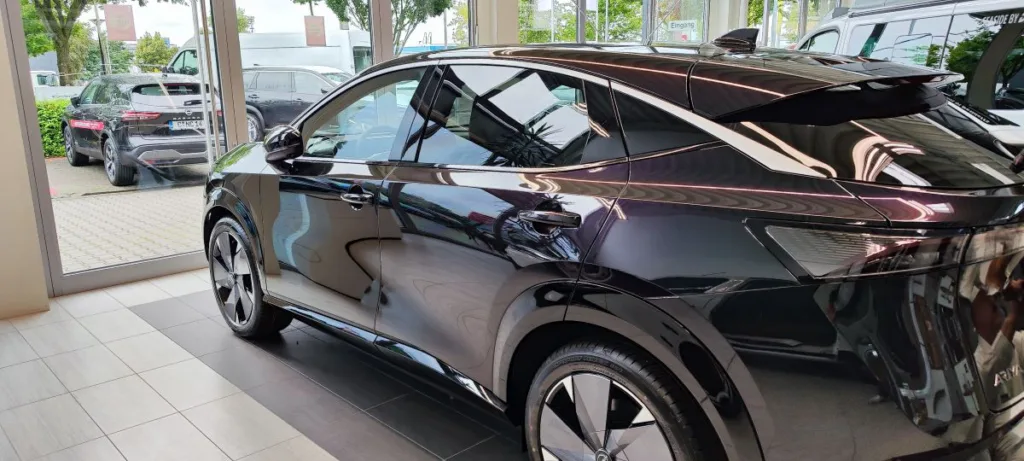
Why did you buy an electric car? What was important to you and which model?
At this point, most people probably think that it was done for environmental reasons, but that was actually not the main reason, but the nice-to-have.
Technology and safety
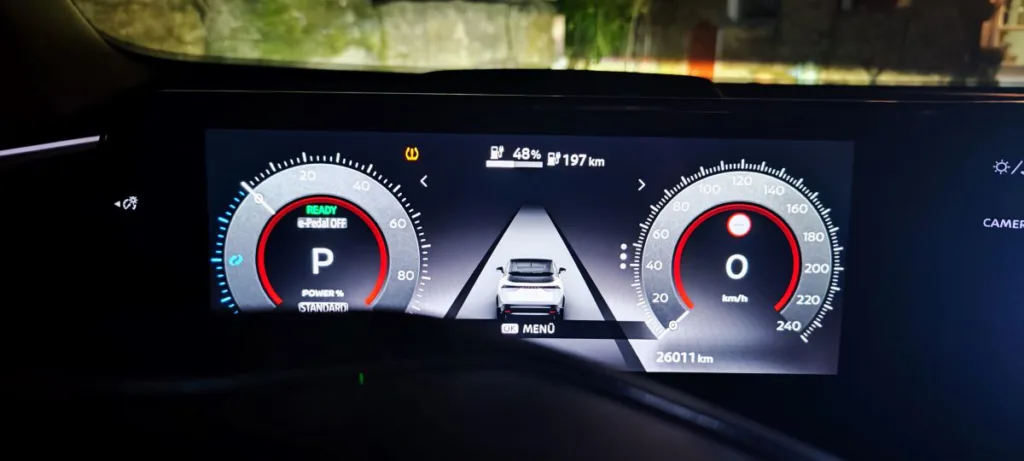
I’ve been a technology fan since childhood, which is why I like to be involved in new developments because these topics interest me. That’s why I quickly read up on new electric cars and ranges, from small cars to SUVs.
I also know from my long experience in the automotive sector that investing in state-of-the-art safety is always a sensible investment.
Not only for myself, but also for others.
And we must not fool ourselves. Global development is clearly focused on alternative drive systems, and all further developments are also geared towards these vehicles.
Safety concepts can certainly also be used in combustion vehicles, but they are no longer developed for them, only adapted for them.
And this is an important difference between current and past industrial development.
The cost of the e-car
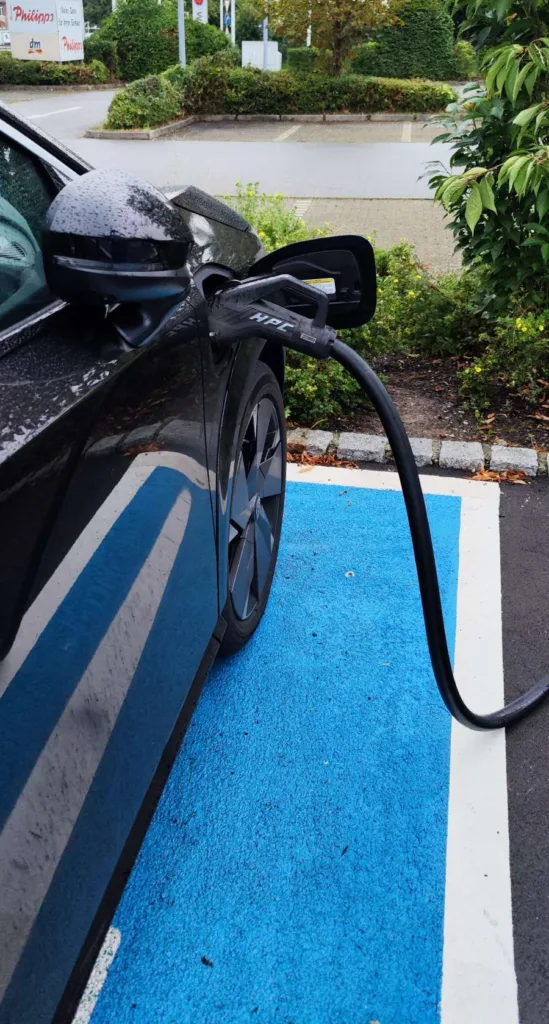
Then, of course, there are the costs. I’m a numbers person and, especially with this kind of important investment, I look at it several times and do the math, both in terms of the purchase costs and the operating costs.
I therefore analyzed the market in detail back in 2022 and looked at and tried out many different vehicles before making my decision.
I have provided a sample calculation below to give you an overview.
And purely from my personal experience over the past 1.5 years, I can say that my expectations have been met. My expectations have been met and my costs are within the range I calculated. So, everything is fine.
The environmental aspect of electric cars
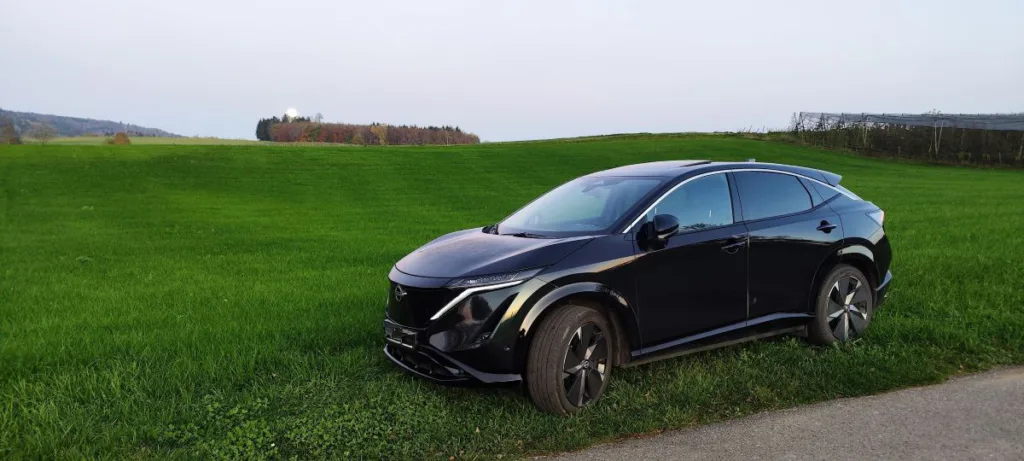
Of course, there is also the environmental aspect, which is also important to me despite the main reasons.
I know there are voices for and against, but most studies show that the effect between combustion engines and electric is a time effect.
Both vehicles are different in production.
The combustion engine is efficiently designed and has a low environmental footprint in production.
Electric cars currently have the disadvantage that battery technology is more harmful to the environment.
Although this disadvantage will soon be offset by new generations of batteries with a longer range without lithium, we are looking at the current situation.
In operation, however, especially if you use green electricity like I do, the balance is already completely reversed.
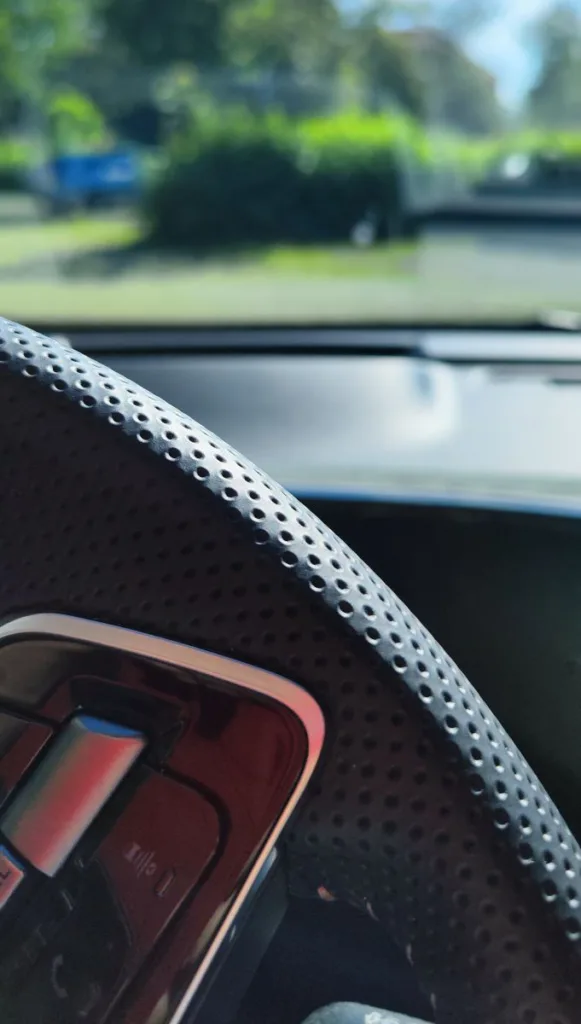
The longer a combustion engine is in operation, the worse its balance sheet becomes and the greater its disadvantage, until the point comes when the new e-cars have overtaken it and continue to pull away.
For me, that’s the reason why I’m not going back to the combustion engine in purely financial terms. In addition to the environmental balance, both the cost comparison and the maintenance costs show a better picture with the new drives.
There are certainly alternatives, such as hydrogen in the future or a combination of these forms of propulsion.
But the combustion engine has outlived its time.
When I worked in the automotive industry, I was clearly told decades ago that the technology was outdated.
However, as long as there was money to be made, other plans remained in the drawer. But electric is increasingly becoming a mass market, even abroad.
And the development will continue, whether individual countries participate in it or not.
Some countries support the charging infrastructure as well as the purchase and others do not. But let’s take a closer look at the new class.
What makes an electric car 2025? What about the technology?
The driving experience

As a car fan, in addition to the basic factors mentioned above, the driving experience and handling are of course also important to me. And they are a new form of mobility with this type of car, I can say that from my experience.
It starts with the driving itself.
It’s more of a glide than a ride. Think of it as simply driving off.
The vehicle reacts immediately, you have no real delays and the speed increases smoothly and easily. Without shifting gears and without pauses, as the vehicle does not have or need a gearbox.
This also gives you more interior space, as you only have a center console for comfort purposes.
There is also the so-called recuperation.
Recuperation
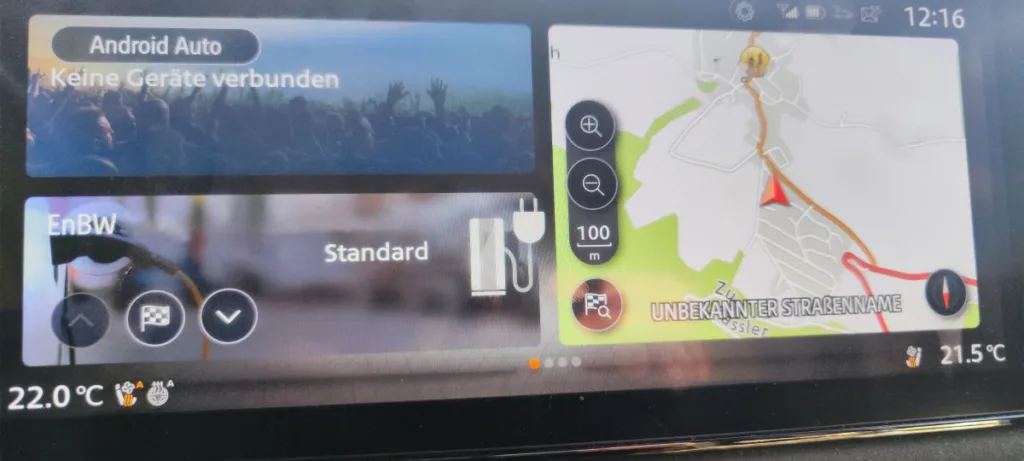
This means that the vehicle reuses the energy generated by braking directly from the energy consumption beforehand and does not simply represent a loss of value, as is the case with most combustion engines.
In my everyday life, I actually only use the gas most of the time. I’m driving on a country road at 100 km/h. Then I see the town sign in the distance and take my foot off the accelerator.
The recuperation immediately starts to gently reduce the speed and return it to the battery, and thanks to the timing feeling you develop, you have come down to 50 km/h at the town sign without having actively braked at all. This also protects your brakes and tires.
On steep, longer sections, which I often have here in southern Germany, it has happened to me several times that the energy returned was so high that I got percentages of the battery power back.
But if I don’t have to react to other vehicles, traffic lights or anything else in front of me, I rarely have to actively brake. You practically just let it roll down until it reaches the speed to which you can then hold it again with the accelerator.
So riding also changes your entire driving style if you use it effectively for yourself.
You have a much more relaxed attitude on the road. I quickly realized that for myself.
The complete electric car package
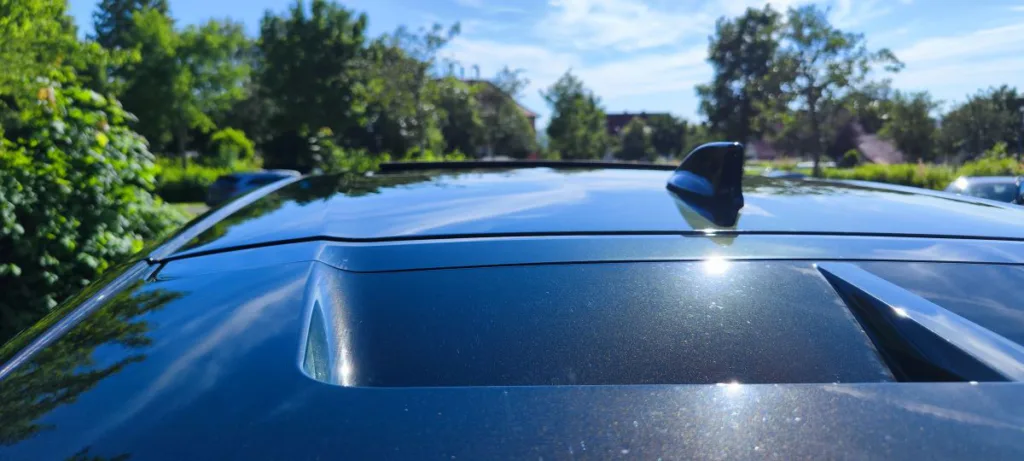
You also have all the other factors that now relate to my car and which are also comparable with combustion engines.
Nissan, among others, offers a comprehensive package and you don’t have to pay extra for each individual area. Other manufacturers also offer this, of course.
For example, there is the sensor system for light and rain, which does everything on its own.
The same goes for cruise control, which is geared towards saving energy and also keeps you in your lane with steering if you want it to. This driving style always gives me a glimpse of the autonomous driving of the future, even if I rarely use it.
The head-up display, which shows you your speed in the front of the windshield so that you don’t have to keep your head down.
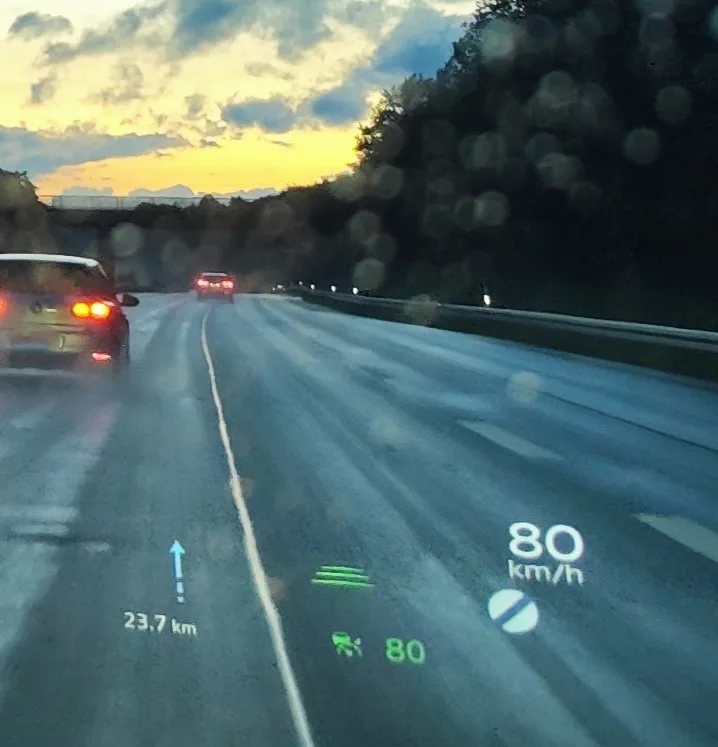
The 360-degree camera, which not only gives you a view from the sides, but also from above when parking, so you can practically see from a bird’s eye view how your car is positioned in the space.
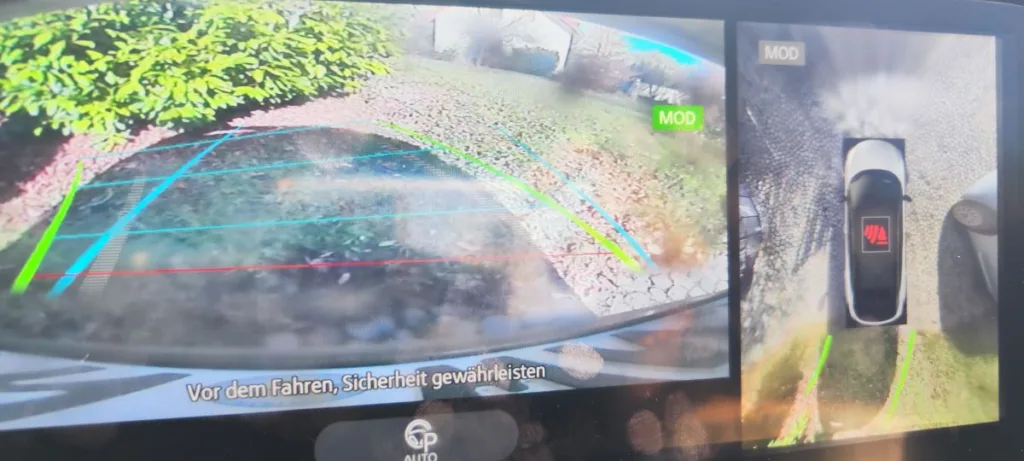
Circumferential distance sensors that warn you if you get too close or if someone passes behind you without you noticing.
Sure, these are all aspects of modern vehicle technology.
But here in this car, it all comes together as a coherent package for me and makes driving more than just moving from A to B; it also offers comfort and a relaxed feeling.
The market overview of the new class
Which electric cars are currently available? What tips do you have for new electric cars
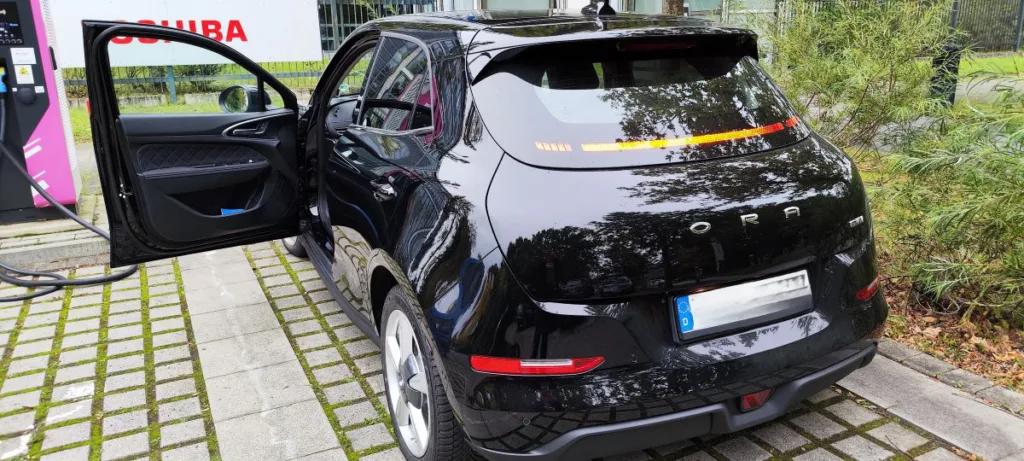
This is no longer so easy to keep track of. According to the automotive press, more than 74 new electric vehicles came onto the market in 2024 alone, and the range continues to grow.
However, after my extensive research at home and abroad, I can give you the following advice for your individual search.
Consider a purchase very carefully.
I have often come across the fact that many people still think in terms of “buying a car”. In my opinion, however, this view is no longer in keeping with the times.
Even the manufacturers are no longer really focusing on this, as the market is developing rapidly and dynamically.
Hence my tip. Think carefully about whether you want to buy a car at all .
Sure, you might think it’s yours. That’s true, but it makes no difference in everyday life. Because you can also decide freely about a leased vehicle without being tied to ownership and the associated major investment.
Subsidies, such as the German GHG bonus, also largely include leased vehicles, so you are not at a disadvantage from leasing.
And you are still free to decide whether you want to keep the car, trade it in, buy it or finance it. The leasing banks are open to all options.
In addition, you have converted the large investment into a time investment and you can invest the unused capital, for example, which brings you much more.
You should also not forget that you have a slight profit through inflation due to the fixed and predictable leasing rate and, if you have invested wisely, you can earn back the cost of the rate in parallel through the unused capital of the major investment.
Organize your search in a structured and rational way according to your needs
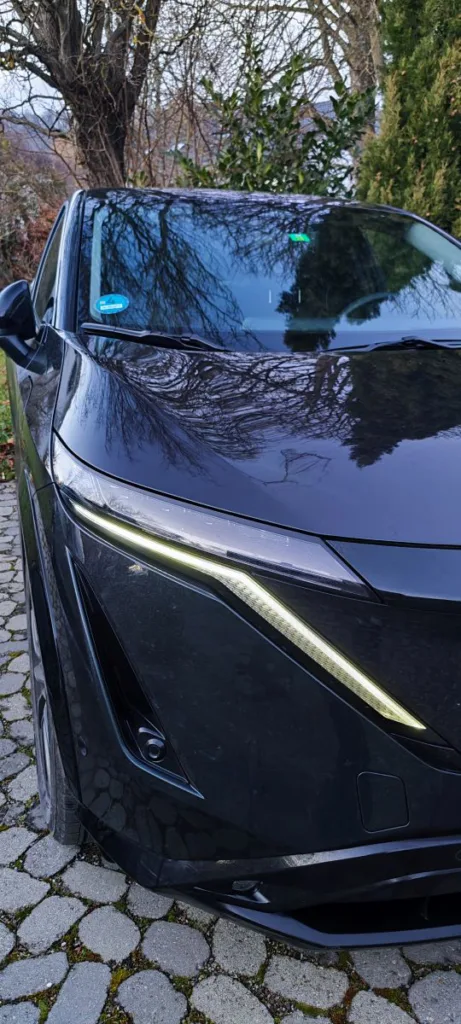
I proceeded as follows in my search:
First of all, break away from certain manufacturers, because most of them are already on the same level globally in terms of both technology and quality.
Then ask yourself objectively. What kind of car do I need? Should it be big? Should it be comfortable? Should it be safe? In other words, what exactly do you expect from a car?
Once you’ve decided this for yourself, just do a free search on the Internet.
Which models are available? What fulfills my purpose?
Free of manufacturers or costs and choose 5 models from different manufacturers, preferably not affiliated with the same group.
Then compare these 5 in terms of equipment and range, cost and availability and see if they fit your budget plans.
Another important point is of course sustainability and the environment, depending on how high you prioritize it.
The advantage of being so focused is that no car dealer or manufacturer can tell you anything. You know everything yourself and you know whether you need it or not.
No car dealer has to sell me a car, because I already know in advance what is important to me or not. That’s why I’m always an easy customer for the salesperson.

If you have now selected 3 of your five vehicles in our example, go to the vehicle level.
You go to a dealer and look at the car without obligation, test drive it and see if it’s what you feel comfortable with.
The final stage is the actual costs.
Many manufacturers offer large discounts and promotions. Take a look at these too and don’t be afraid to ask in the dealership what is on offer and compare it with the Internet.
There are so many direct dealers where you can also get a cheaper deal online and in the end a car is an item that is the same as what you have in front of you. In other words, they all sell you the same product
I know it all sounds long and complicated. But it’s not at all in practice and it offers you the clear advantage of having made the best decision for you.
What does an electric car cost to lease? A cost comparison using the example of a combustion engine
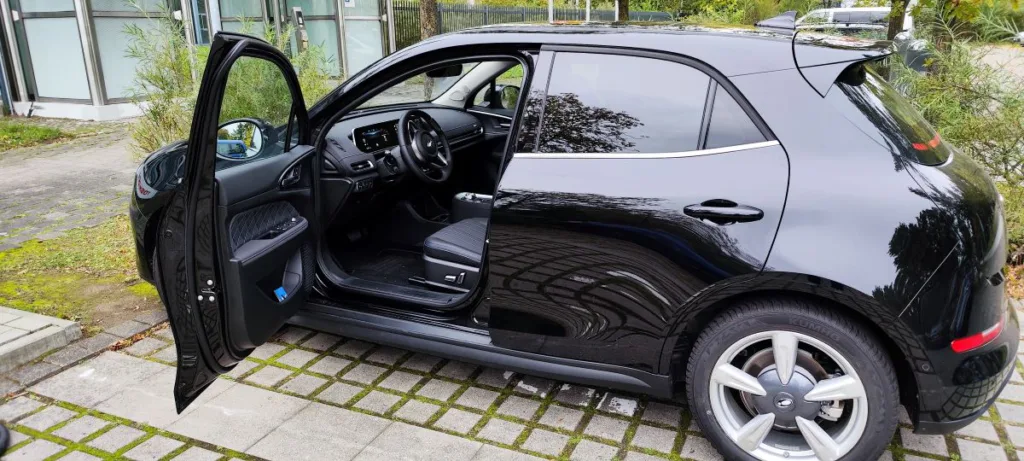
To give you an insight, here is a sample calculation of a comparison between an electric car, a petrol car and a diesel car. Please also note the comments.
This list compares my vehicle Nissan Ariya from 2022 with the Skoda Kodiaq with current values from the current year 2025.
| Vehicle | Car | Nissan (5) Ariya Evolve | Skoda Kodiaq (6) | Skoda Kodiaq (6) |
| Drive | Engine | Electric | Combustion engine (gasoline) | Combustion engine (diesel) |
| Performance | Power output | Insurance | 190 HP | 193 PS |
| Reach | Range | Up to 533 km (WLTP) | Approx. 600 km (according to WLTP) | Approx. 870 km (according to WLTP) |
| Price (approx.) | Price (approx.) | From € 59,000 | From € 59,000 | From € 59,000 |
| Leasing rate | Leasing rate | 7.068,00 € | 6.936,00 € | 5.952,00 € |
| Insurance | Average consumption/100 km | 1.074,00 € | 1.386,00 € | 2.387,04 € |
| Maintenance | Maintenance | 110,00 € | 270,00 € | 270,00 € |
| Vehicle tax (D) | Vehicle tax (D) | 269,00 € | 338,00 € | |
| THG premium (D) | THG premium (D) | – 240,00 € | ||
| Costs per month | Costs per month | 667,67 € | 738,42 € | 745,59 € |
| Costs per year | Cost per year | 8.012,00 € | 8.861,00 € | 8.947,04 € |
| Cost per km | Cost per km | 0,53 € | 0,59 € | 0,60 € |
| Average consumption/100 km | Average consumption/100km | 17.7 kWh | 8,9l | 6,1l |
| Cost per quantity | Cost per quantity | 0,59 € | 1,72 € | 1,61 € |
| per 100 km | per 100km | 10,44 € | 15,31 € | 9,82 € |
| per 1 km | per 1 km | 0,10 € | 0,15 € | 0,10 € |
| On month | Per month | 130,54 € | 191,35 € | 122,76 € |
| For year | Per year | 1.566,45 € | 2.296,20 € | 1.473,15 € |
| Total cost per km | Total cost per km | 0,64 € | 0,74 € | 0,69 € |
| Total costs per month | Total cost per month | 798,20 € | 929,77 € | 868,35 € |
| Total costs per year | Total cost per year | 9.578,45 € | 11.157,20 € | 10.420,19 € |
If I had used current sales prices or the actual consumption values of my Ariya, the comparison would have been even more favorable. But I used the official ones.
As already mentioned, I only want to give an approximate insight with this example.
Therefore, I have taken a comparable vehicle, the leasing rates and insurance premiums are taken from comparison portals (Check24 and Leasingmarkt.de or Spritmonitor.de from 22.01.2025) with an annual mileage of 15,000 km and the insurance is a premium insurance with fully comprehensive cover, which also covers letters of protection.
I have also used German fees and costs in my example; these are of course also different abroad. However, the additional subsidies for abroad are also not included and must be deducted additionally.
The electricity and fuel prices are taken from the current market situation on 21.01.2025 and may of course also vary. Especially as the trend will soon change significantly if fuel prices rise massively.
As previously mentioned, the manufacturers also offer promotions.
It is therefore important to note that you should not take this example as completely authentic or apply it one-to-one to your personal situation.
It is only important to me to give you a feeling for it, so I ask you to understand it in the right context.
What subsidies are available for e-cars?

There are very different subsidies in Europe, which I will outline here based on the current situation. Of course, subsidies can also change, expire or be increased at any time.
I therefore ask you to see this information in the right context and to inform yourself exactly according to your needs.
Austria (AT) (7)
Environmental promotion
Up to €5,000 grant for the purchase of a fully electric car.
Example: The purchase of an electric car such as the Nissan Ariya could bring in a purchase premium of €3,000 for the vehicle itself and a further €2,000 for the installation of a charging station.
Tax benefits
Electric vehicles are exempt from the standard consumption tax (NoVA) and the motor-related insurance tax. This saves up to €1,000 per year.
Belgium (BE) (8)
Regional subsidies
Flanders: In Belgium, subsidies for electric cars vary depending on the region. The Flemish government originally introduced a purchase premium for electric cars, but discontinued it prematurely on November 22, 2024.
Wallonia: Offers additional incentives, such as an environmental bonus for vehicles with zero emissions.
Example: Private individuals in Belgium can receive tax relief of up to 1,500 euros per charging station, provided it is a smart charging station powered by green electricity.
Switzerland (CH) (9)
Cantonal subsidies
In the canton of Geneva, there are grants of up to CHF 2,000 for the purchase of an electric car.
Zurich offers tax concessions that make the purchase more attractive.
Example: A buyer in Geneva could receive a direct subsidy, while in Zurich the annual tax for an electric vehicle is reduced by up to 80 %.
Germany (DE) (10)
State funding
There is currently no nationwide subsidy for the purchase or leasing of electric vehicles, as the environmental bonus was discontinued at the end of 2023. but there is also good news.
The greenhouse gas reduction quota (GHG quota) is an instrument of German climate policy that obliges oil companies to reduce their CO₂ emissions. Owners and lessees of pure electric cars in Germany can have the emissions saved through their emission-free operation certified and sell them to these companies, for which they receive an annual premium.
This applies to small electric cars, compact SUVs and larger cars.
There are also providers who will do this for you and transfer the premium to you after deducting a processing fee.
In fact, this means that you get money from the oil companies for not using their products. Amazing, isn’t it?
Regional incentives
Individual federal states are examining their own programs, such as regional subsidies for the purchase of electric cars or tax breaks. However, concrete programs have not yet been implemented.
Private offers
Many manufacturers, including Nissan, offer special leasing or financing deals. For example, leasing rates for a 2025 model such as the Nissan Ariya start at €299 per month (depending on equipment and brand).
Spain (ES) (11)
Plan MOVES III
Up to €7,000 subsidy for the purchase of an electric car.
80% of the costs for the installation of a private charging station are subsidized.
Example: A buyer in Madrid could use the €7,000 grant for the vehicle and at the same time receive up to €1,000 for scrapping an old vehicle.
France (FR) (12)
Ecological premium
Up to €5,000 subsidy for vehicles with a purchase price of less than €47,000.
Income-dependent additional support for low-income households.
Scrapping bonus
2,500 for scrapping an older car.
Example: A buyer could receive a total of €7,500 in subsidies if they scrap an old vehicle and buy a new electric car.
Italy (IT) (13)
State funding
Up to €3,000 subsidy for the purchase of an electric car.
An additional €2,000 if an old vehicle is scrapped.
Regional incentives
Lombardy: Tax exemption for electric vehicles for up to 5 years.
South Tyrol: subsidies for the purchase of electric cars and the installation of charging stations.
Example: A buyer in South Tyrol could combine a subsidy of up to €5,000, including regional subsidies and tax exemptions.
As already mentioned, these are examples taken from the currently available public information from 22.01.2025.
Everyday life and vacations – How are things going with which kilometers of range?
How do you charge your electric car and where?
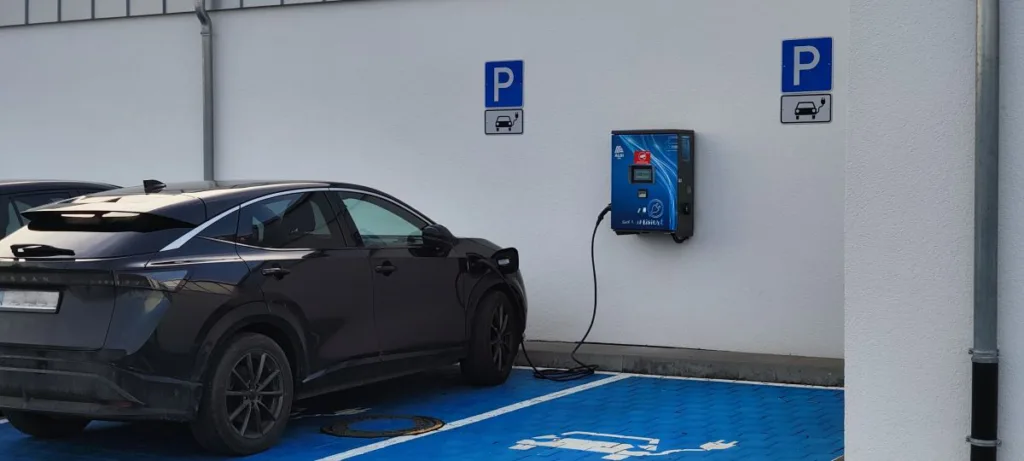
General handling
Firstly, I would like to say at this point that charging electric cars is much easier than you might think. You get an RFID card from a provider of your choice and use it to charge like a fuel card.
Most providers offer their services throughout Europe and are networked with other providers so that you can use your card throughout Europe.
Of course, the prices are not the same everywhere, but you can find out the costs at each charging station in advance and then decide freely where you want to charge and how much.
And your consumption is billed centrally once a month for all withdrawals.
Some providers also offer subscription models. You pay a certain flat rate per month in return for a lower price per kilowatt hour. This can be particularly interesting for frequent users.
However, I myself appreciate the free choice of charging stations according to my convenience and do not reach such high consumption values that the lower kWh price would have an effect.
That’s why I’ve chosen a provider for myself that gives me complete freedom. Or I have two providers that I use depending on the price.
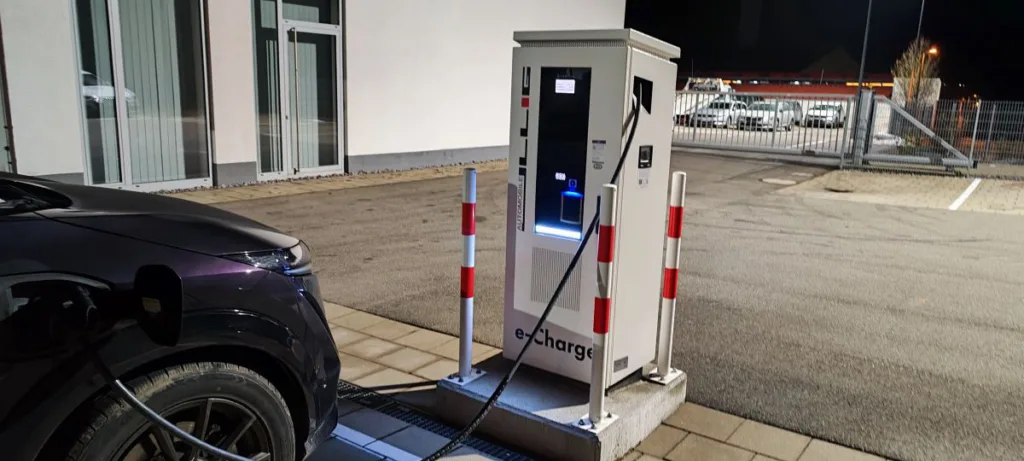
The price is basically fixed per kWh and always gives you an indication of how much charging will cost you. And you know this before you even drive to a charging station.
There are also providers who also use the data exchange between the vehicle and the charging station for so-called Fast Load. The provider saves your vehicle ID in your data and you don’t even have to hold your card in front of it at your usual charging station.
Your car is automatically recognized and charging starts as soon as you have connected the charging station. This is also a convenience factor.
An example of how you charge in everyday life without local knowledge
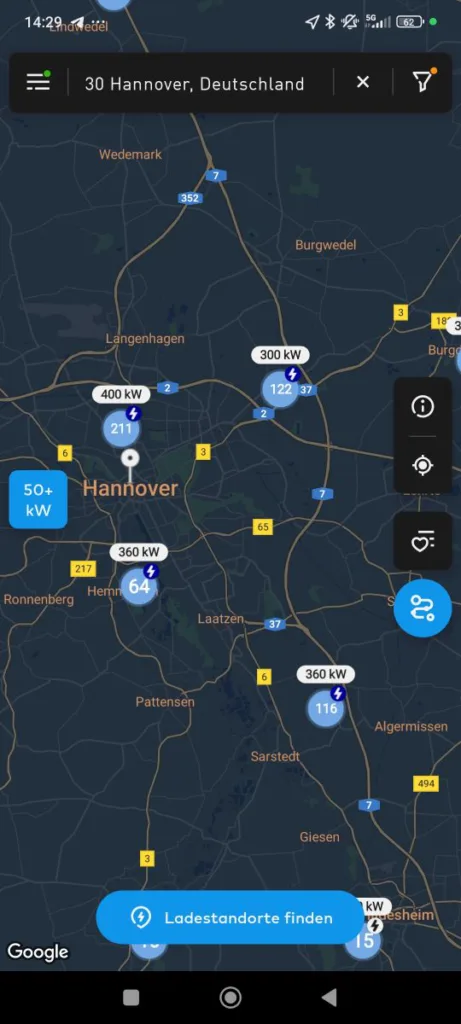
I have illustrated an example here with screenshots.
You want to charge your car but are in an area you are not familiar with or want to check in advance what charging options are available at a particular location.
I’ll take the Mobility plus app from EnBW as an example.
You open the app and immediately have a map. Here you enter your destination in Germany or abroad. In our example, I’ll assume Hanover in Germany and Barcelona in Spain.
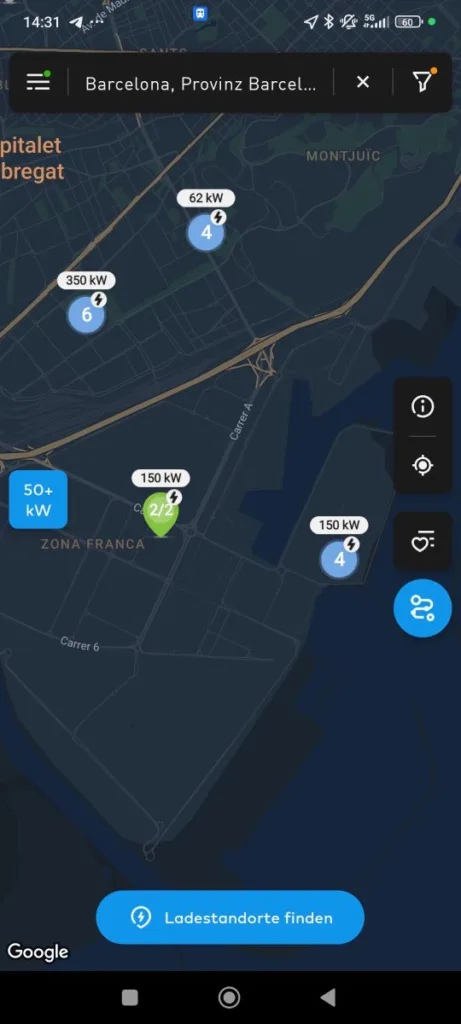
You can see possible charging points and the available charging power on the map.
You can also limit these to your connection options and the power in advance in the settings so that you only see columns that you can actually use.
If you now scroll through the map, it will show you where charging points are available.
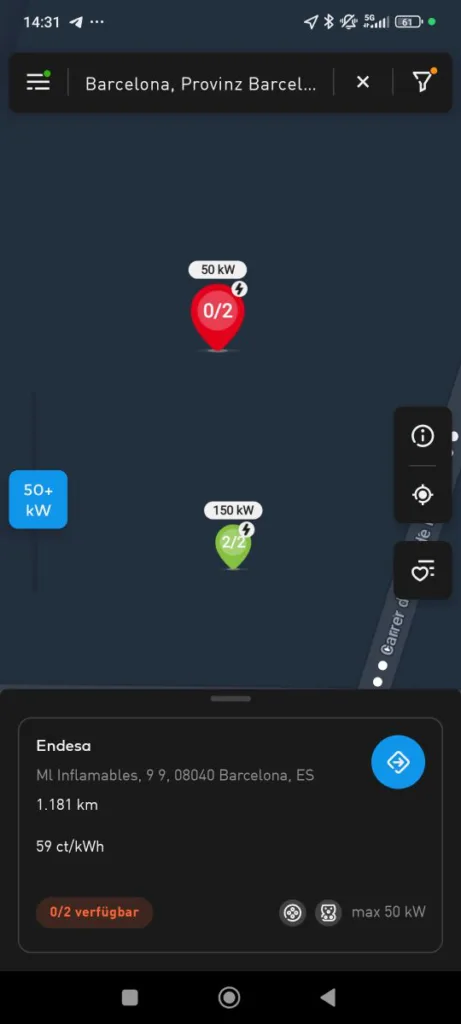
The green or, in the example, red area shows you how many charging spaces are currently available or that the charging spaces are occupied.
You can also see the costs per kilowatt hour directly so that you can compare which provider offers the cheapest charging in your area.
Depending on the data situation, the information is more or less in real time, depending on the country and provider of the charging station.
These values are also displayed in Google Maps itself if you simply enter “charging station”.
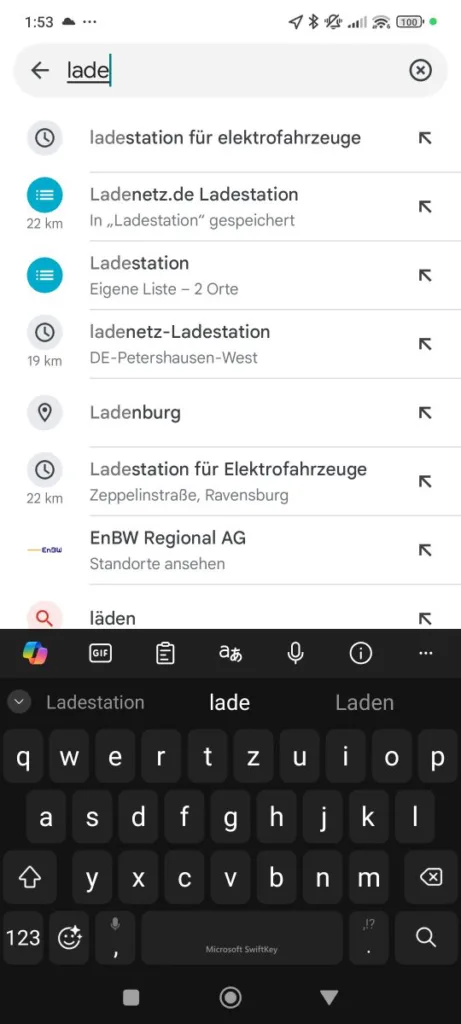
However, I usually use the apps of the providers myself, e.g. EnBW, as I can see directly what it costs me to charge, as Google Maps can only show the general prices, not necessarily the prices I would pay there myself.
But you can choose the location and you know how much it costs to charge there and whether it is occupied before you even get close to the charging station.
If you now click on the blue arrow at the bottom right, you will be redirected to Google Maps and the navigation will be set to the charging station so that you only have to confirm to be guided to the station.
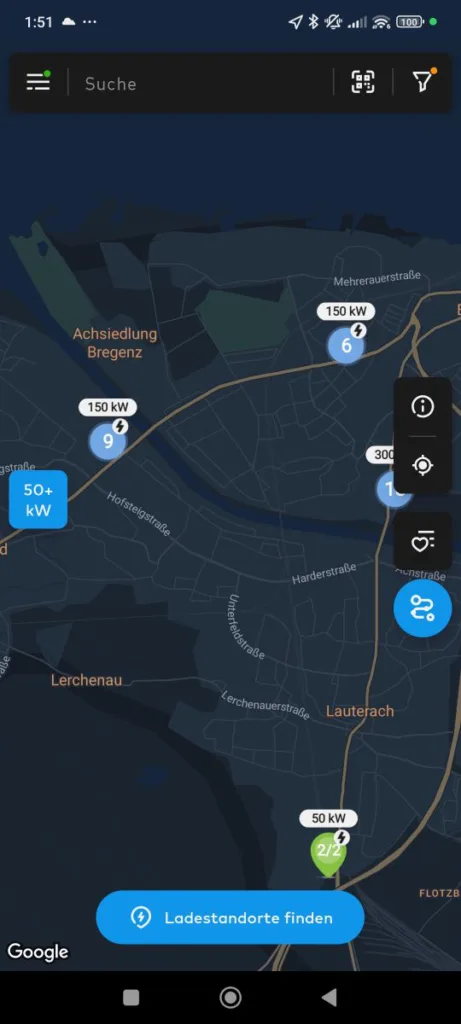
When you are there, connect your vehicle and use the symbol with the QR code in the top right-hand corner of the map in the app. Then use the activated scanner to scan the code at the column.
The app then connects to the charging station and starts charging without you even needing the charging card with the RFID chip.
I charge most of the time without even having to take the card out of my wallet. Practical, isn’t it?
Alternatively, you can of course simply hold the card up to the reader and charging will start immediately.
What is everyday life like with an electric car?
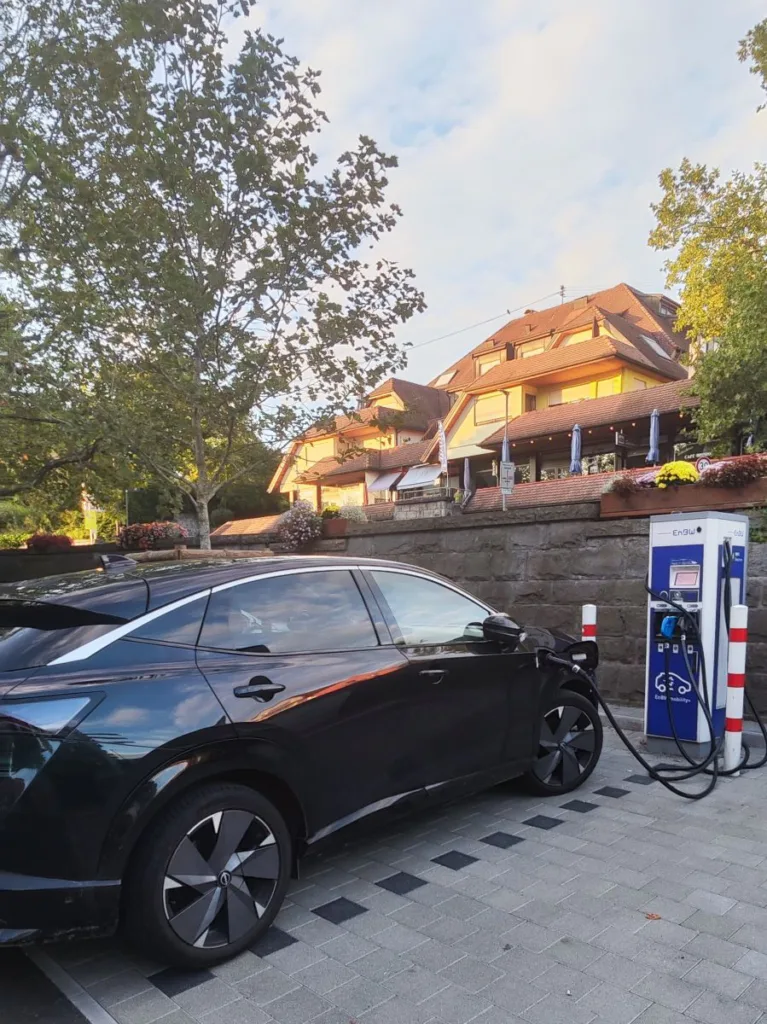
It’s actually the same as with any car. You have your routines and you simply interweave charging tactically wherever it makes sense. You don’t charge all the time, but when it makes sense.
For example, when I go shopping, when I go to the gym or even just when I go for a walk.
You make double use of your time if you use it the way you want to on the one hand and save time on the other because your car is not just standing around, but also charging at the same time.
And a little tip. You also have local advantages with an electric car. Many charging points are conveniently located.
I have a town nearby that I sometimes visit. The old town is not so easily accessible by car, I get around there a lot on foot.
But the charging points are so conveniently located that not only can I park closer to the old town than in any parking garage, I even save on the parking fee.
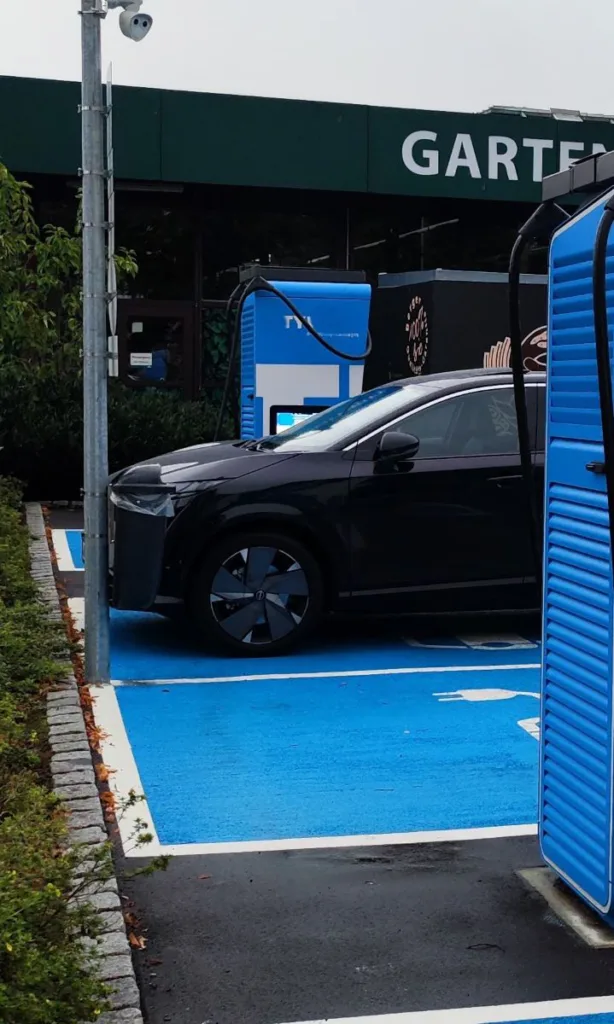
This allows you to combine effective parking with charging and even has an additional benefit.
Some cities, even large cities, offer partially free parking in municipal parking lots if you drive an electric car to promote electromobility as a small subsidy.
That’s why the switch has paid off for me in this way and continues to do so every day.
And I don’t have to stand in line at gas stations or repeatedly check what the current price of gas is or where it’s cheapest.
Do you also go on vacation with the cheaper SUV e-car?

But I certainly do that and I have done it several times.
Outside of Germany, the charging infrastructure is often more extensive and easy to combine, as the RFID cards can be used throughout Europe.
I always check the maps to see where a stop and a break are feasible and what charging options I have so that I can make a maximum of one or two stops, and that just works.
It’s just another point in the travel planning. But the network is also so extensive that you can set off spontaneously. You don’t actually just stop anywhere when you need energy.

In Switzerland, for example, clearly visible signs inserted into the normal rest area signage indicate exactly where you can and cannot charge on the highway.
You can also use the integrated navigation system in your electric car to display the nearest charging stations. Even with approximate consumption up to that point, so that you can estimate whether or not it will still fit.
I also have to say in general that I am very happy with the range display in my car.
The remaining range is very accurate and you can rely on it, even if I don’t go down to the very last kilometer, of course.
Outlook and summary

As already mentioned, the market is in a state of flux and we can all look forward to what the future will bring. For me, however, my experience with combustion engines means that there is no going back to such a car.
There are reports of joint ventures with companies that have already developed completely new and better batteries by 2025 or other approaches such as battery exchange stations in Asia or other drive systems such as hydrogen.
But what I think we should understand for ourselves is that relying on the internal combustion engine will no longer achieve anything in the medium term. Because that is the intention of international politics, in terms of the global warming treaties.
The aim is to make combustion vehicles an expensive hobby and that makes sense, as oil is a limited resource that we as humanity should not be relying on anyway. There is also the environmental impact.
The price of electricity will certainly be a variable, also in the future.
But there will always be electricity to power the best electric cars. In order to continue to pursue the 2050 plan, politicians must also keep giving customers new incentives.
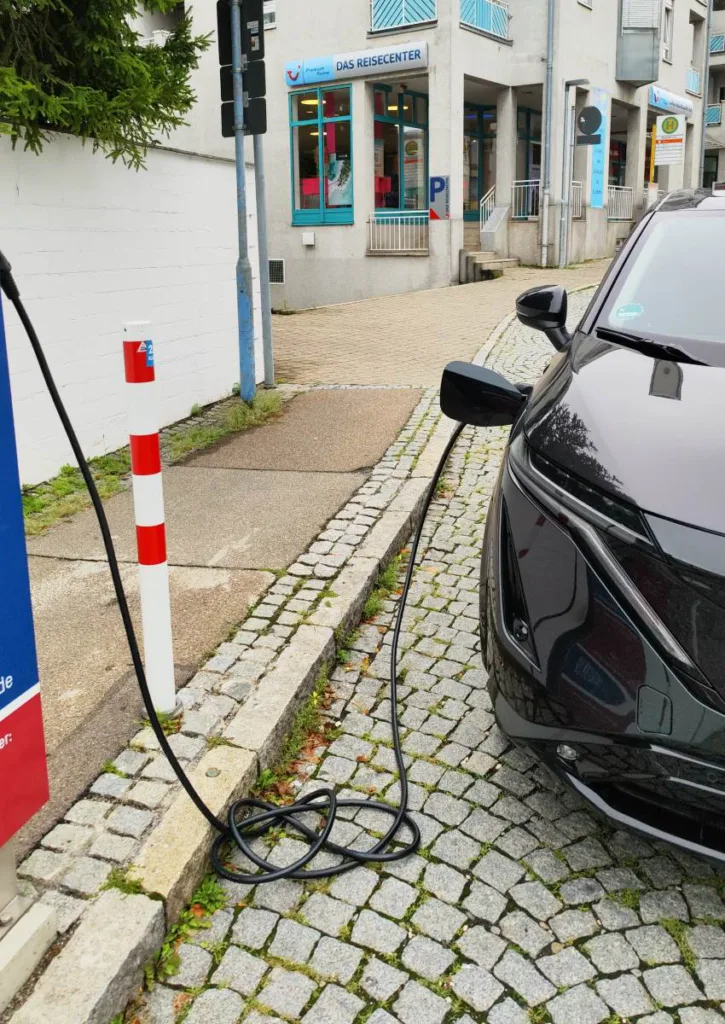
I am already curious to see what can be expected from the thoughts from November 2024 now at the beginning of 2025 after the elections in Germany.
Of course, we are still at the beginning of this development, but it will reach the masses and become affordable within this framework. When buying, it is important to get an overview of the market.
Which models are available, which new models are coming in 2025, do they already have more range or what new e-mobility trends are there?
After all, the industry itself has an important interest in making the technology affordable for everyone so that it can continue to expand its customer base.
I hope I could give you an insight with this article and answer some of your questions.
Finally, I would like to thank the companies Nissan, EnBW and Skoda for allowing me to mention and illustrate their products in this article.
I wish you every success with your mobility solutions and lots of fun driving.
Best regards
Florian
Look around and follow me
My social media presence, my e-book and interesting facts about me

References
(1) Vehicle tax calculator Germany
(2) https://www.check24.de/
(3) spritmonitor.de
(5) Nissan Ariya
(6) Skoda Kodiaq
(7) Toyota Austria
(8) Wallbox Belgium
(9) Switzerland
(10) Germany
(11) Spain
(12) France
(13) Italy
